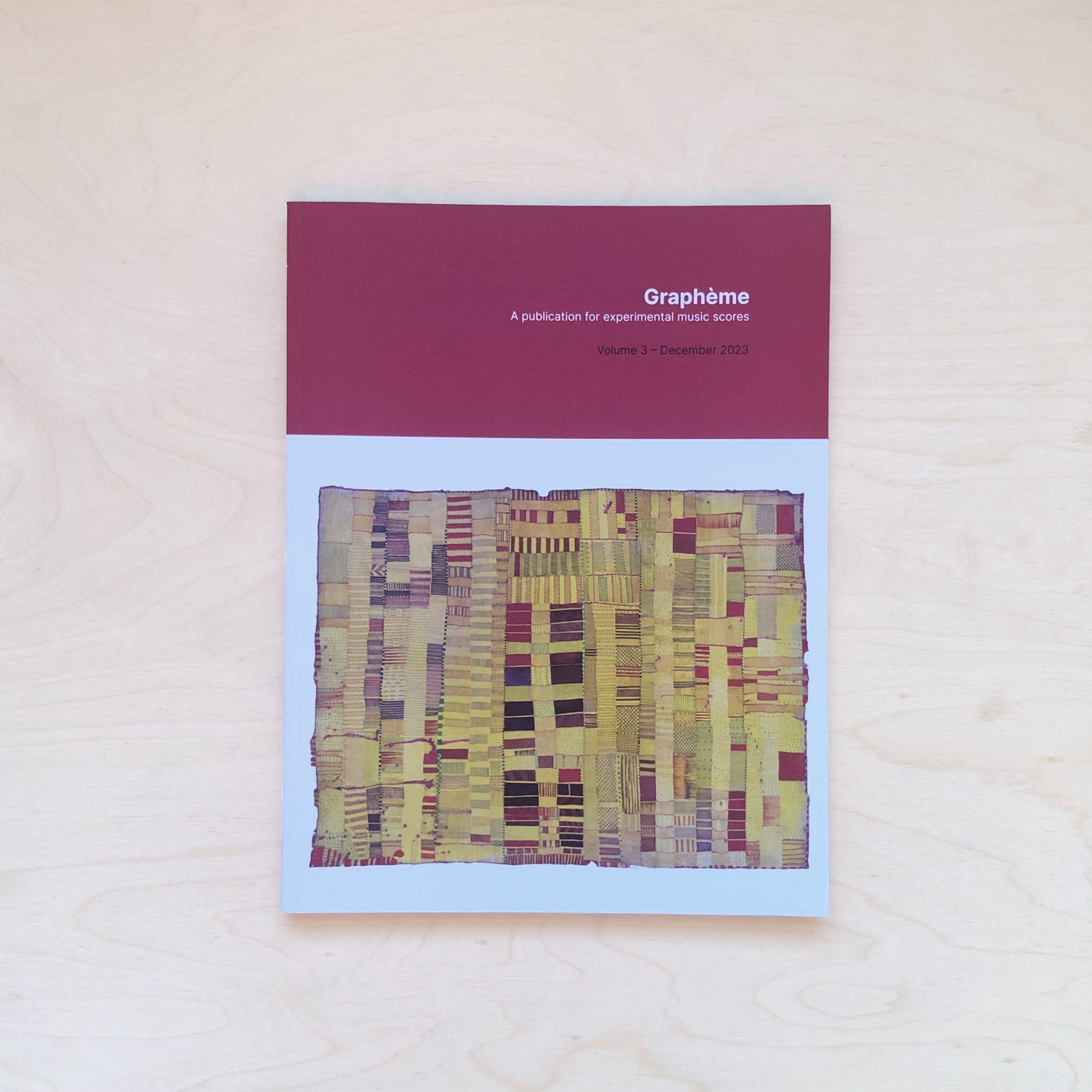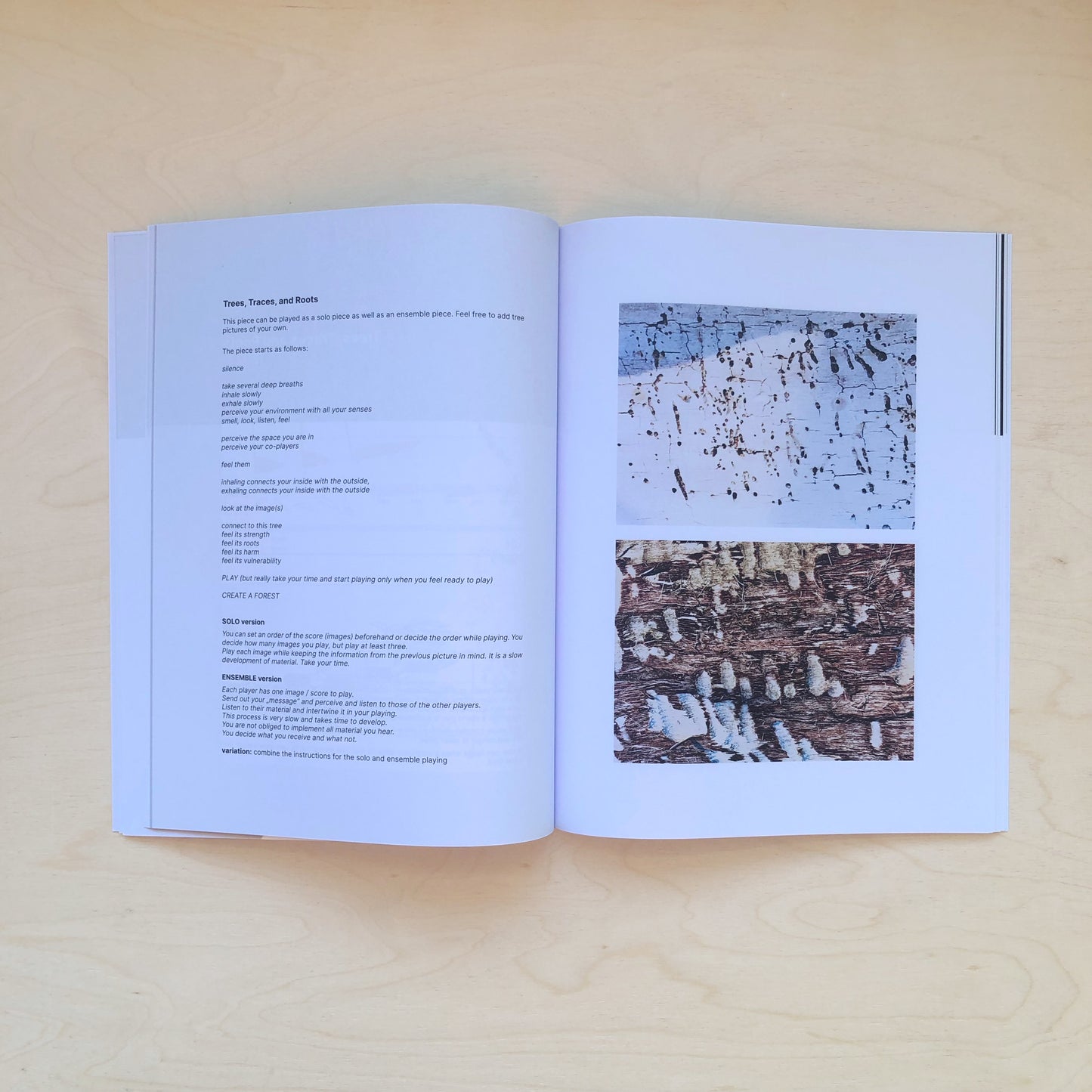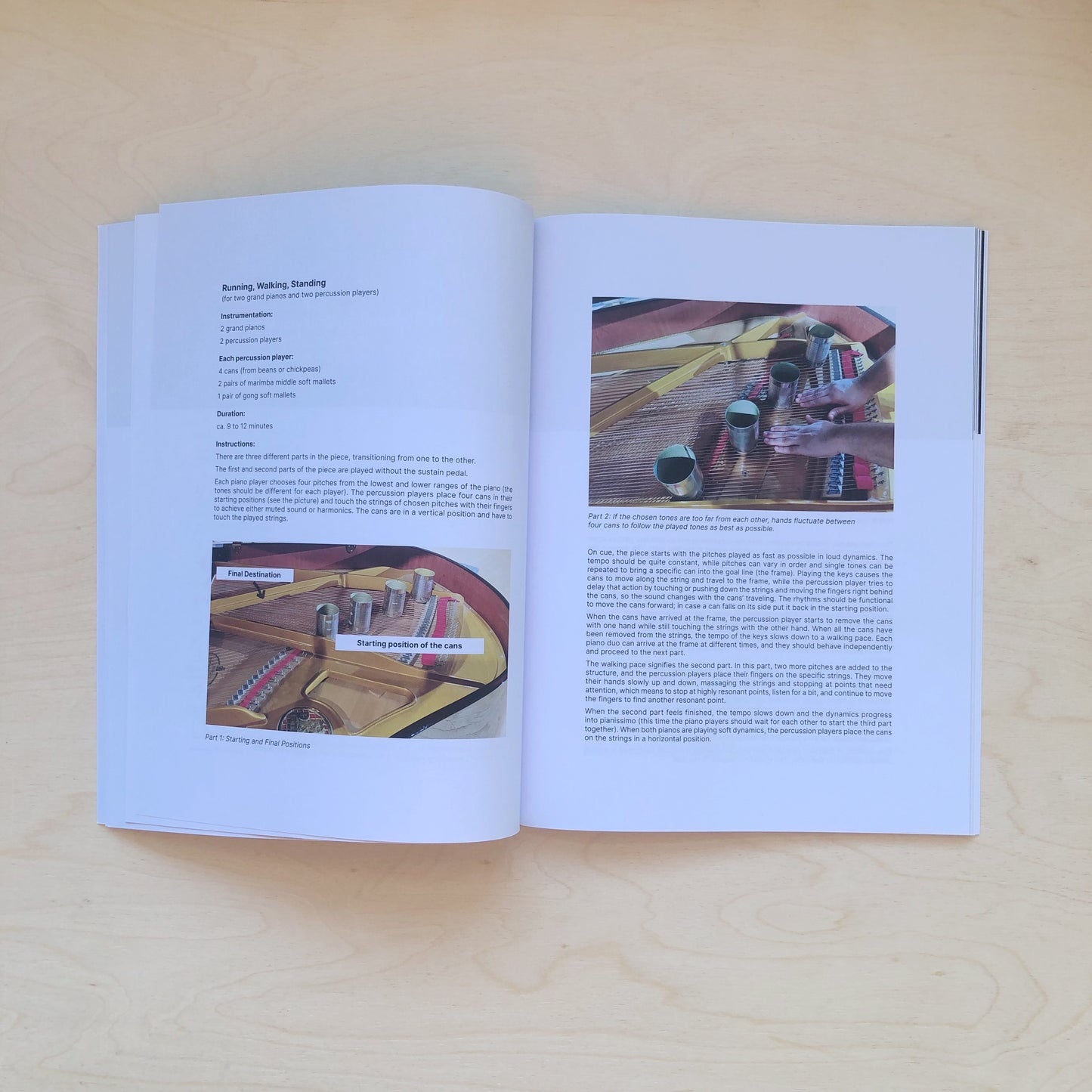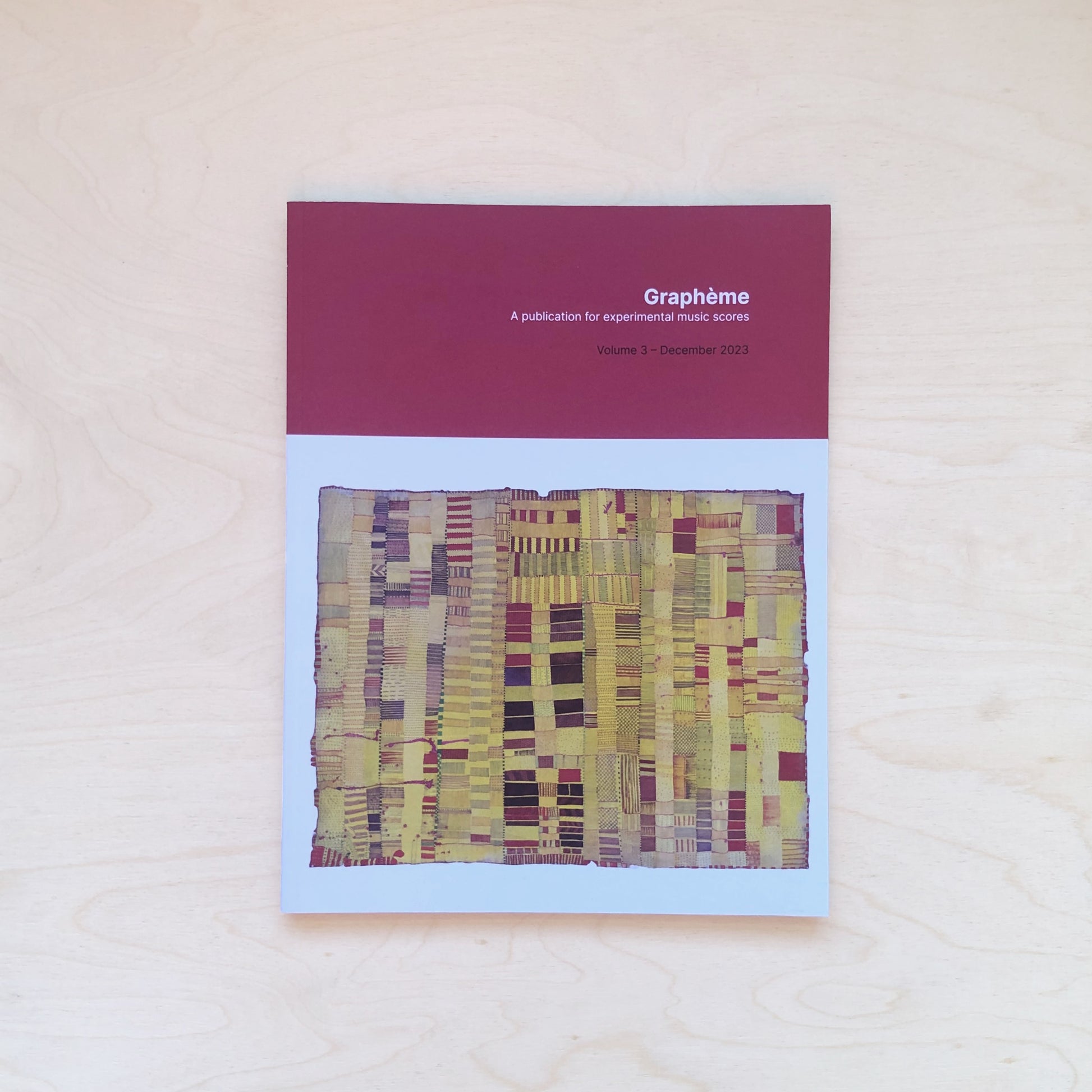Graphème - a publication for experimental musical scores - Vol 3
Graphème - a publication for experimental musical scores - Vol 3
Tony Buck, Racha Gharbieh, Mazen Kerbaj, Magda Mayas und Ute Wassermann (eds.)
smallest functional unit
2023
Softcover
30 x 23 x 0.5
64 pages
Verfügbarkeit für Abholungen konnte nicht geladen werden
We are proud to present to you the third edition of Graphème: another series of graphic and experimental music scores by composers from a variety of backgrounds and experience.Each composer offers a rigorous conceptual framework and provides an often sensual dialog between composer, performer, sound and space in spirit of collaborative creativity.
The pieces here represent imaginative and inventive ways to notate a musical vision, making use of innovative approaches – photographic representation, geometric and cartographic schema and various degrees of indetermination and precision – as well as extending more traditional ideas of notation, to expand on expressive possibilities.
Some composers embrace deep and abstract conceptual propositions while others exploit the aesthetic potential of graphic sign making to transfer ideas into a sounding choreography of possibilities, inviting performers and listeners to find connections in unexpected places.
Progress in science and technology over the last decades has opened up new choices for expression and interaction, and we indeed find many composers taking up these new challenges with vibrant energy and enthusiasm. Some aspects of technology and new experimental score-making, for example, those that engage with video and interactive media, are beyond the scope of this publication. We have, however, found artists who have taken these ideas and influences as a point of departure, responding to this increasingly rational, mathematical and scientific world by using notions of data collection, the ever increasing precision of measurement and use structures derived from geometry and mathematics in innovative ways.
Others suggest an analogous approach to these new digital processes and embrace traditional technologies to propose new ideas. In doing so, these artists bring into question hierarchies of the ever refined and quantifiable which are replaced instead with concerns of broader subjectivities. Gesture, flow, energy, intuitive impressions of the relationship between artist, shared space and time within which the work is made, become areas of interest, often attempting to avoid judgement based on exacting reproduction, taste or precedent, and challenging ideas of control and the notion of composition as a finished, finite work.
We find composers engaging with “old-school tools” like postal mail, frottage, and cartography to bring into being a profound and visceral experience. They create new opportunities and approaches to music-making working with technologies or media from earlier times.
For some composers there is neither end nor intention, but an exploration or offering of a process, a procedure of possible paths and outcomes, welcoming the unforeseen.
In the words of poet and performer Vito Acconci, the page becomes “…a field for action…a model space, a performance area (…) The page… doesn’t compete with elements outside but is used, instead, alongside them. Use [the] page as the start of an event that keeps going, off the page; use the page to fix the boundaries of an event, or a series of events, that take place in outside space.” 1
Through these conceptual and material collaborations, the composers presented here, each in their own ways, set frameworks that invite the performers’ imagination to flourish. They engage with materiality and gesture, expanding on Cagean ideas by re-purposing sonic, environmental contexts.
All of the composers in this edition offer to performers, interpreters and listeners alike the opportunity to engage with them and their vision, explore potentials for co-creation and considering and expressing new ideas of music making and performance.
smallest functional unit





